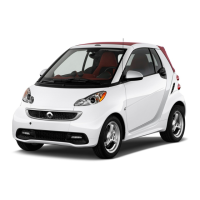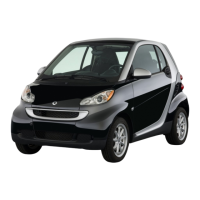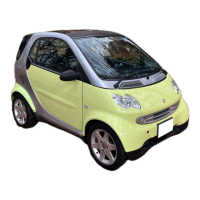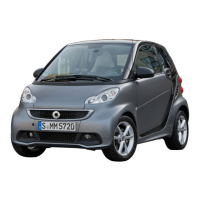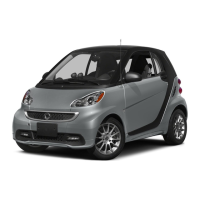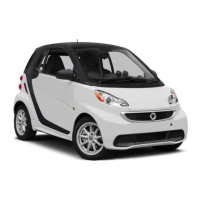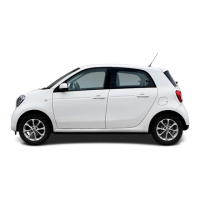example. There is an increased risk of
serious or even fatal injuries.
Have the restraint system checked and
repaired immediately at a qualified spe-
cialist workshop.
PASSENGER AIR BAG indicator lamps
PASSENGER AIR BAG OFF indicator lamp : and
PASSENGER AIR
BAG ON indicator lamp ; are
part of the deactivation system of the front-
passenger front airbag.
The indicator lamps display the status of the
front-passenger front airbag.
R
PASSENGER AIR BAG ON lights up: the front-
passenger front airbag is enabled. If, in
the event of an accident, all deployment
criteria are met, the front-passenger front
airbag is deployed.
R
PASSENGER AIR BAG OFF lights up: the
front-passenger front airbag is disabled.
It will then not be deployed in the event of
an accident.
Depending on the person in the front-
passenger seat, the front-passenger front
airbag must either be disabled or enabled;
see the following points. You must make sure
of this both before and during a journey.
R
Children in a child restraint system:
whether the front-passenger front airbag
must be enabled or disabled depends on the
installed child restraint system, and the
age and size of the child. Therefore, it is
imperative to observe the notes on "Chil-
dren in the vehicle" (Y page 40). There
you will also find information on rearward
or forward-facing child restraint systems
on the front-passenger seat.
R
All other persons: the PASSENGER AIR BAG
ON indicator lamp must be lit. The front-
passenger
front
airbag is enabled. Be sure
to observe the notes on "Seat belts"
(Y page 34) and "Airbags" (Y page 37).
There you can also find information on the
correct seat position.
Observe the information on the airbag deac-
tivation system of the front-passenger front
airbag (Y page 43).
Seat belts
Introduction
A correctly fastened seat belt is the most
effective means of restraining the movement
of vehicle occupants in the event of an acci-
dent or overturn. This reduces the risk of
vehicle occupants coming into contact with
parts of
the vehicle interior or being thrown
from the vehicle. The seat belt also helps to
keep the vehicle occupants in the best posi-
tion in relation to the airbag deployed.
The seat belt system consists of:
R
Seat belts
R
Belt tensioners and belt force limiters
If the seat belt is pulled quickly or suddenly
from the belt sash guide, the inertia reel
locks. The belt strap cannot be pulled out
further.
The belt tensioner tightens the seat belt to
lie close against your body in the event of a
collision. However, it does not pull the vehi-
cle occupants back towards the seat backrest.
The belt tensioner also does not correct an
incorrect seat position or the strap layout of
a seat belt that is worn incorrectly.
When triggered, seat belt force limiters help
to reduce the peak force exerted by the seat
belt on the vehicle occupant.
The belt force limiters are synchronised with
the front airbags, which absorb part of the
deceleration force, This makes it possible to
reduce the forces to which vehicle occupants
are subjected during an accident.
!
If the co-driver's seat is not occupied, do
not engage the seat belt tongue in the
buckle on the co-driver's seat. Otherwise,
34
Occupant safety
>> Safety.

